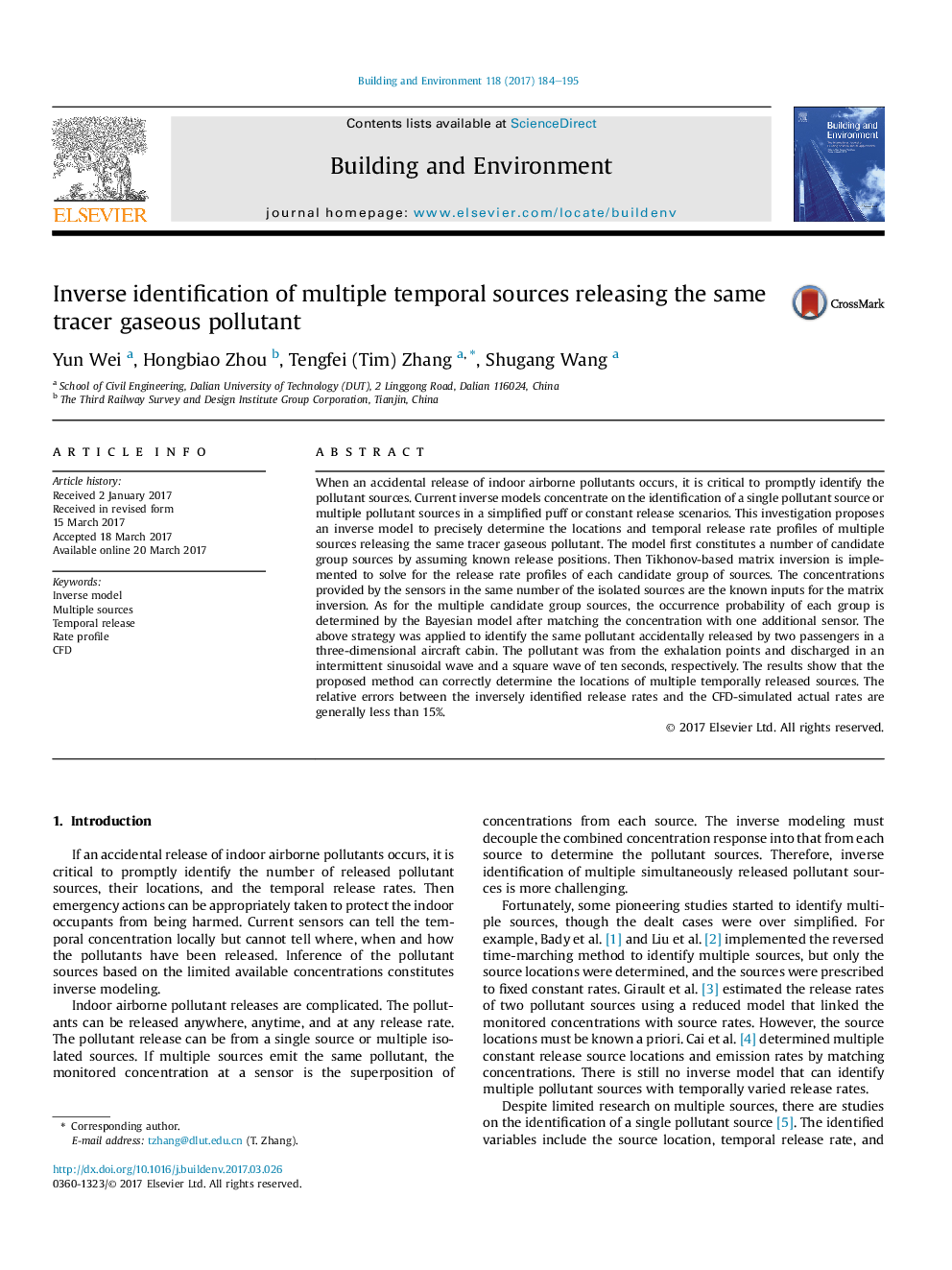| کد مقاله | کد نشریه | سال انتشار | مقاله انگلیسی | نسخه تمام متن |
|---|---|---|---|---|
| 6479267 | 1428374 | 2017 | 12 صفحه PDF | دانلود رایگان |
- Inverse CFD modeling is proposed.
- Multiple temporal tracer gaseous pollutant sources are identified.
- Both release locations and transient rates are determined.
- The matrix inversion are combined with the Bayesian inference.
When an accidental release of indoor airborne pollutants occurs, it is critical to promptly identify the pollutant sources. Current inverse models concentrate on the identification of a single pollutant source or multiple pollutant sources in a simplified puff or constant release scenarios. This investigation proposes an inverse model to precisely determine the locations and temporal release rate profiles of multiple sources releasing the same tracer gaseous pollutant. The model first constitutes a number of candidate group sources by assuming known release positions. Then Tikhonov-based matrix inversion is implemented to solve for the release rate profiles of each candidate group of sources. The concentrations provided by the sensors in the same number of the isolated sources are the known inputs for the matrix inversion. As for the multiple candidate group sources, the occurrence probability of each group is determined by the Bayesian model after matching the concentration with one additional sensor. The above strategy was applied to identify the same pollutant accidentally released by two passengers in a three-dimensional aircraft cabin. The pollutant was from the exhalation points and discharged in an intermittent sinusoidal wave and a square wave of ten seconds, respectively. The results show that the proposed method can correctly determine the locations of multiple temporally released sources. The relative errors between the inversely identified release rates and the CFD-simulated actual rates are generally less than 15%.
Journal: Building and Environment - Volume 118, June 2017, Pages 184-195
